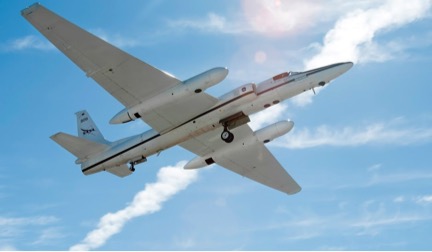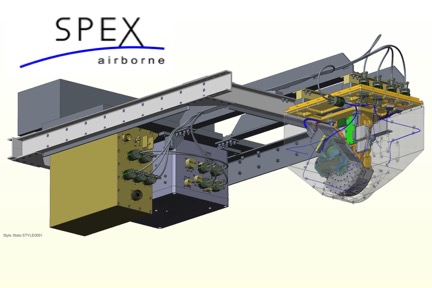After its first research flights above California in 2016, the polarimeter SPEX-airborne, which measures fine particles (aerosols) using a revolutionary measurement principle, has yielded results far beyond the expectations. The research instrument makes it possible to carry out unique atmospheric research into the impact of various types of aerosol on climate and air quality. This has now been demonstrated in practice for the first time at a high altitude.

SPEX Airborne made its first flights on board a NASA ER-2 research plane at an altitude of 20 kilometers together with another polarimeter: the AirMSPI, of NASA’s Jet Propulsion Laboratory (JPL). The first attempt to obtain information about fine particles from the SPEX Airborne measurements was immediately successful.
The Aerosol Optical Thickness (a measure for the quantity of fine particles in the air) that SPEX-airborne measured agreed with the value of the AERONET ground-based measurement station that the ER-2 flew over. The polarization measurements of SPEX Airborne also compared extremely favorably with those of AirMSPI.
The results were presented and positively received during the American Geophysical Union meeting in December 2016 in San Francisco, where the world community of polarimetry and aerosol/cloud researchers was well represented. With this an important milestone has been reached.

A Dutch partnership of institutes and companies designed and produced the first SPEX prototype instrument. SRON made the instrument airborne and it is the lead party for the scientific operations, data analysis, and data interpretation.
SPEX Airborne is the next step towards atmospheric research from space with the space instrument SPEXlite, which is in the predevelopment phase in the Netherlands. SPEXlite will combine the innovative design and production techniques of the existing TROPOlite spectrometer developed by TNO with the tried and tested SPEX modulation technology.


